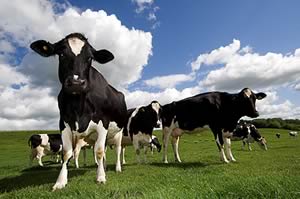23/09/08
National Milk Laboratories (NML) has launched the UK’s first Johne’s disease screening programme on milk samples. It is available to producers through their vets who can incorporate the screening as part of an on farm Johne’s management plan.
Johne’s disease is a chronic wasting disease caused by Mycobacterium avium subspecices paratuberculosis, commonly known as MAP. It is on the rise in UK dairy herds and it is estimated that 50% of herds may be infected with 5% of herds heavily infected. Infected cows can pose a risk to young animals before any clinical signs are shown. The dairy industry, including many vets and producers, are recognising the need to control the disease.
The NML Johne’s screening programme tests milk from individual cows on a quarterly basis for the presence of antibodies against MAP. These samples are sent to NML directly from the NMR recording service.
“The real value of the test is its simplicity for vets and producers,” says NML’s business development manager Hannah Pearse. “We use milk samples already collected through our NMR milk recording service. There’s no additional sampling for vets or producers.
“Once producers are enrolled onto the service by their vets the samples are automatically directed for Johne’s testing on a quarterly basis and results are available to the vet via the NMR web based service Herd Companion PRO – a system used by more than 75% of specialist dairy vets.”
The Herd Companion system holds a log of previous Johne’s tests for the individual cow along with other health and fertility data. Consecutive test results are used to determine the disease status of each cow.
“It’s important to include more than one test result,” adds Ms Pearse. “Increased frequency of testing increases the sensitivity of the test allowing more accurate interpretation of the disease status of the cow. The report also includes milk yield, potential milk yield drop, parity and days in milk – all factors that have a bearing on the management control programme.”
Cows can be grouped according to their risk level – which has been carefully calculated by the programme. It follows a traffic light system with cows in the red group – having repeated positive Johne’s tests and potentially showing a drop in milk – classed as high risk.
“Precautions should be taken to make sure disease spread within the herd is minimised and this means that colostrum or milk from the red group should not be used to feed to calves. Similarly, cows in the yellow group - which may have had a positive result – should be treated as high risk and their colostrum or milk should not be used. Colostrum and milk from cows with negative results - that are considered low risk - can potentially be used for calves.”
Fees for NML’s Herdwise Johne’s screening programme depend on herd size and are adjusted monthly depending on cows in milk. Many vets will use the screening programme as part of a more comprehensive control plan that includes a biosecurity risk assessment and a detailed analysis of the risk of spread within the herd. Control measures specific to the farm can then be developed using results from the Johne’s screening programme.
NML’s HerdWise Johne’s screening programme has gained CHeCS (Cattle Health Certification Standards) accreditation.
SUMMARY - Johne’s disease background:
Johne’s disease is a chronic wasting disease caused by MAP infecting the gut. It is on the rise in UK dairy herds. Cattle movements following restocking after foot and mouth and increased herd size has fuelled the spread between herds.
Also, there has been more spread within herds as cow numbers and stocking densities have increased and more waste and pooled colostrum has been fed to calves.
Defra has run a survey to determine the prevalence of Johne’s disease in the national dairy herd. Estimates - although not official – quote that 50% of UK herds may be infected with 5% of herds heavily infected. A survey has shown that 100% of herds with 500 or more cows in the US are infected with Johne’s disease.
Infected cows can pose a risk to young animals before any clinical signs are shown. Infected cows may not shed MAP or show any symptoms of the disease typically before the age of four but this can be any time between the ages of two and seven years.
Risk assessment of the herd and testing cows on a regular basis will help identify these infected cows and give a chance to isolate them from the calving yards and prevent their waste milk and colostrum being fed to replacement calves.
This ‘test and manage’ approach using repeated testing is a more economic approach than the more traditional ‘test and cull’.
Reduced milk yield is one of the earliest signs of the disease. This, combined with other associated signs such as a higher risk of displaced abomasums, downer cows and high cell count cows through reduced immunity, make for an expensive disease.
 Organic Acids Vital in Fight to Control Salmonella Organic Acids Vital in Fight to Control Salmonella
 Sourcing Sheep and Cattle from the Blue Tongue Free Area Sourcing Sheep and Cattle from the Blue Tongue Free Area
 Outbreak of Peste des Petits Ruminants in Morocco Outbreak of Peste des Petits Ruminants in Morocco
|




